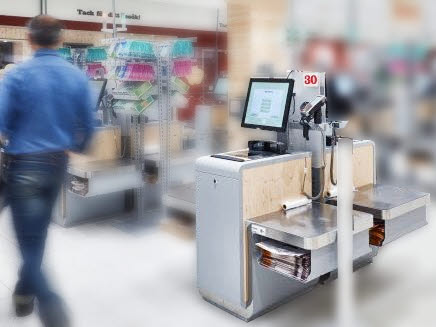
How Artificial Intelligence can Redefine Retail
Time to Read: 3 min
11 March 2021
Success in retail is often down to making day-to-day operations as streamlined and cost-efficient as possible. Trimming a few euros here or saving a few minutes there can add up into a major boost to a retailer’s bottom line.
Traditionally, retailers have relied on smart, hard-working people to figure out the best ways of doing things and to design and implement appropriate processes. But as many people have discovered – not just in retail, but across many different industries – that may not be enough in the future. More and more retailers are turning to AI to increase their efficiency and competitiveness.
One important concept that’s growing in popularity is the “digital twin”. It’s been widely used in manufacturing and engineering for decades but is relatively new in retail.
What is a digital twin?
A digital twin is a software-based, real-time model of the real world. In retail, it could be a store, a group of stores, or an entire supply chain. The digital twin gathers data from many different sources, including sensors and other IoT devices. ITAB CLoud Platform, for example. collects direct data from sources including cameras, manual and self-checkouts, doors, and user engagements with digital signage. This means it’s not dependent on manual data input and is therefore always accurate and up to date.
This data can then be used to analyze patterns of behavior, detect anomalies or problems, and react accordingly. Depending on how it is set up, the software can trigger an alert and recommend an appropriate course of action, or it can autonomously take remedial action to optimize results without any human intervention. Digital twins can be a game-changer for retailers in three ways.
Responsiveness
Because the digital model is constantly updated and monitored, it can respond instantly to changing circumstances. For example, if it sees increased sales of an item, it can cross-check with the inventory levels and immediately arrange for restocking if necessary. There is no need to wait for a human to realize that inventory is running low and manually place a re-order.
This type of rapid response capability means that potential problems can be addressed before they become an issue. That improves consumer satisfaction, reduces employee stress, and reduces lost sales.
Prediction
Where the digital twin really shines is its ability to simulate and predict what will happen in the future. Machine learning techniques, combined with big data, mean that the twin is able to identify patterns and trends which are too complex or too subtle for humans to spot. It can then recommend appropriate courses of action.
This can potentially cover almost every aspect of retail, from predicting supply levels to setting prices. It can be used to assist with both day-to-day operational planning or with running more complex what-if scenarios.
Efficiency
Most importantly, the digital twin allows retailers to become more efficient in many ways. AI can enable them to streamline supply and inventory management, resulting in less unsold stock, less wastage, and reduced marginal costs. It can also optimize pricing, resulting in increased sales.
Using AI will free up staff from doing routine, repetitive tasks, which has several benefits. It reduces errors and results in improved management information. It also enables staff to focus on customer service or other jobs that require the human touch.
It’s not easy to admit that machines can do our jobs better than we can, but it’s something more and more of us have to accept. Tech-savvy retailers who embrace AI and digital twins will inevitably enjoy a significant advantage over those who don’t.

